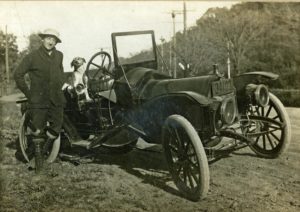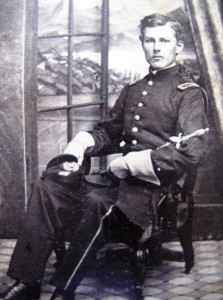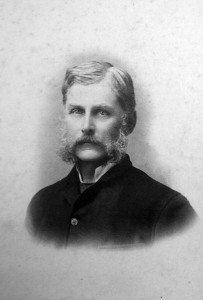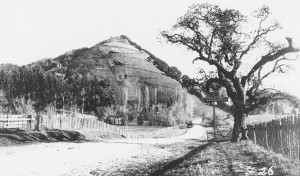In the late 1870s, the old cemeteries in San Rafael were filling up, and a new site was needed. A committee was formed and several prominent men proposed selling parts of their land for the new cemetery, including the Short Brothers. But eventually the contract went to the prominent physician Dr. Henry DuBois of San Rafael, who purchased 113 acres at the end of Forbes Valley, now Sun Valley, in 1872 for $8,500.
During the Civil War DuBois had been a Union surgeon, and he became Medical Inspector for the Army of the Potomac. After the Battle of Chancellorsville, he went under a flag of truce and spent three weeks behind enemy lines, burying the dead and caring for the wounded. He was in the battle of Gettysburg and with Sheridan’s Cavalry during the Wilderness and Petersburg campaigns. He was promoted to Captain, then Major.
After the war he served at Fort Union and Santa Fe, New Mexico during the Indian wars. When he left the service, he moved to San Rafael and became a leading physician of the city.
Dr. DuBois was resolved that his new Mount Tamalpais Cemetery would be a truly beautiful place to visit. He traveled the country visiting cemeteries and taking notes. He broke ground in June of 1878, building four miles of roads, a huge gate and bell tower, and a series of seven lakes. An artesian well was drilled and over 200,000 trees were planted, including the eucalyptus forest that still stands. Work commenced on a fine road through Forbes Valley connecting the cemetery to San Rafael. The cemetery opened in April 1879 and was officially dedicated August 14, 1879. Most of the leading citizens of the area have been buried there ever since.
Dr. DuBois was anxious to have additional routes to the cemetery, including one directly from San Anselmo as the drive from San Anselmo to San Rafael and back up Fifth Avenue to the cemetery was too long to be convenient. He was evidently unable acquire rights for a road from the Short family, but finally was able to purchase from Manuella Sais’s estate the triangular parcel on the western side of Red Hill in 1892 for $2,600. He hired Chinese laborers to cut a new road from the Olema Road (now Sir Francis Drake Boulevard), switch-backing back and forth across from one property line to the other nearly to the summit. From there it descended down DuBois’ other property on the northern slope in another series of steep switchbacks, to emerge finally at the cemetery. The road was steep and terrifying to navigate with a team of horses. Later writers dubbed it Dubois’s Folly. The story is that one undertaker made the trip in a one-horse hearse and vowed to never do it again. Dr. Dubois died at San Rafael on Wednesday, May 26, 1897, aged fifty-six. He is buried in the cemetery he worked so long to establish.
The road was never used again for its intended purpose, though there is an article from 1916 that tells of two men knocking at the door of Joseph Maghetti’s house at the bottom of the hill. The men had a Model T Ford and asked if they could go up the road. Maghetti replied, “Sure, but only if I can go with you!” And so at least one motor vehicle did go up the road. They had taken a mattock along and had to dig out in places so they could make some of the turns. The speedometer showed that it was three quarters of a mile up the hill, but it took them an hour and a quarter to make the trip up.

Lil Minstrel and the Model T Ford that went up DuBois’s road
In the 1920s, Arbor Road was constructed (along where Shaw Drive runs today) providing access to the Mount Tamalpais Cemetery from Sir Francis Drake Boulevard. The road was closed in the 1930s. The DuBois parcel on Red Hill was eventually acquired by the Town of San Anselmo in 1977.




